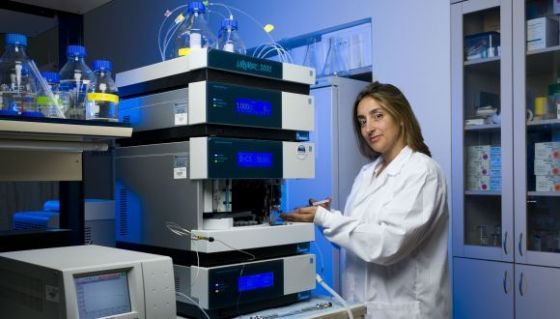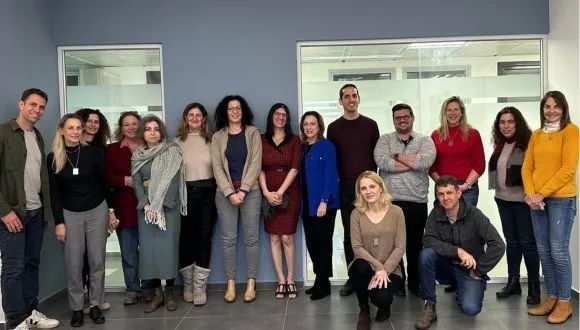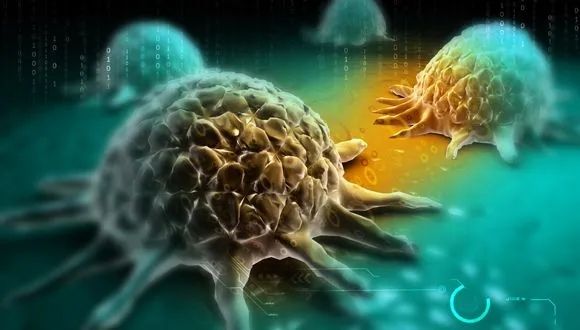
Targeting Melanoma
TAU researchers create a nanocarrier that selectively delivers two medications and releases them simultaneously at the malignant target
Researchers at Tel Aviv University, led by Prof. Ronit Satchi-Fainaro from the Department of Physiology and Pharmacology at the Sackler Faculty of Medicine, developed an innovative nanotechnological drug delivery system that significantly enhances the effectiveness of treatment for the aggressive skin cancer melanoma. The nanocarrier is a biocompatible and biodegradable polymer, which comprises repeating units of glutamic acids (PGA- polyglutamic acid), packaging together two biological drugs belonging to different families with proven efficacy for the treatment of melanoma: BRAF inhibitors (Dabrafenib) and MEK inhibitors (Selumetinib, approved for use in children with NF1 – neurofibromatosis type I).
Prof. Satchi-Fainaro: “One of the major obstacles of the biological treatments is that after a while, the cancer cells develop resistance to the drugs. We assume that by precise delivery of two or more targeted drugs that will attack the cancer cells forcefully and simultaneously from different directions, we can delay or even prevent the acquisition of this drug-resistance.”
The research group included PhD students Evgeni Pisarevsky, Dr. Rachel Blau and Yana Epshtein from Prof. Satchi-Fainaro’s research laboratory at TAU’s Sackler School of Medicine. The paper was published as the cover article of the August 2020 issue of Advanced Therapeutics.
Prof. Satchi-Fainaro: “In this project, we looked for a solution to a problem often associated with drug cocktails: Today, most oncological treatments are administered in the form of cocktails of several medications; However, despite the fact that all drugs are administered to the patient simultaneously, they do not reach the tumor at the same time, due to differences in basic parameters – like how long they survive in the bloodstream (i.e. half-life), and the time it takes each drug to reach the tumor tissue. Thus, in most cases, the medications do not work concurrently, which prevents them from attaining optimal synergistic activity.”
Responding to these challenges, the researchers developed an innovative, efficient and biodegradable drug delivery system. Two biological drugs, known to be effective for the treatment of melanoma, Dabrafenib and Selumetinib, (inhibiting two different components – BRAF and MEK respectively – in the biological pathway which is over-activated in melanoma), were chosen, with the intention of delivering them jointly to the tumor by using a nanocarrier. The drug nanocarrier chosen for the task was PGA, a polymer of glutamic acid – one of nature’s most common amino acids. Developed in Prof. Satchi-Fainaro’s lab several years ago, the nanocarrier has already been tested successfully for treating pancreatic, breast and ovarian cancer in animal models.
In search of an optimal ratio
First, the researchers determined the optimal ratio between the two medications – based on levels and types of toxicity, as well as the resistance mechanism developed by cancer cells for each medication – to ultimately ensure maximum effectiveness, minimal toxicity and optimal synergistic activity. Another important advantage of joint delivery is reduced dosage: a much lower dose is required compared to each drug when administered independently.
The next step was using chemical modifications to enable bonding between the polymeric carrier and the chosen drugs. This combined system can travel through the body with total safety, inflicting no damage to healthy tissues. Upon reaching the cancer cells, the nanocarrier encounters proteins of the cathepsins enzyme family, which are highly activated in malignant tumors. The proteins degrade the polymer, releasing the drugs which become active and join forces to attack the tumor. Prof. Satchi-Fainaro: “It’s like several passengers riding in one cab and getting off together at the same address. They all arrive at the same destination, right at the same time.”
Promising results
Tested on a mouse model of melanoma, the new treatment showed promising results: The nanocarrier delivered the two drugs to the tumor and released them there simultaneously in quantities about 20 times greater than those that reach the tumor when similar doses of the same medications are administered independently. In addition, the therapeutic effect achieved by the drugs delivered by the nanocarrier lasted much longer – 2-2.5 times compared to control group and the group treated with free medications. According to the researchers, this means that the new platform enables much lower dosages – about one third of the dose required in regular drug cocktails, and the treatment as a whole is both safer and more effective. Also, if needed, the new approach allows for dosages that are much higher than the maximum dosage permissible in current methods, thereby enhancing the effectiveness of the treatment even further.
Prof. Satchi-Fainaro: “In this project, we developed an innovative drug delivery system for treating melanoma, delivering two proven medications and releasing them simultaneously at the tumor site. The treatment proved both safer and more effective than the same medications administered as a cocktail. Moreover, our new platform is highly modular and can be used for delivering a vast range of medications. We believe that its potential for enhancing therapeutics for different diseases is practically endless.”
The study was funded by the Israel Cancer Research Fund (ICRF), the European Research Council (ERC), Israel’s Ministry of Health (EuroNanoMed-II program), the Melanoma Research Alliance, the Morris Kahn 3D BioPrinting for Cancer Research Initiative and the Israel Science Foundation (ISF).
Featured image: Prof. Ronit Satchi-Fainaro
Related posts







Destroying Cancer: new drug delivery system containing RNA therapy can target cancer cells in bone marrow





Operation Guardian of the Walls: Women, Young People and Residents of the South Paid the Heaviest Price



Breakthrough Gene Therapy Offers Hope for Severe Developmental Epilepsy in Children

